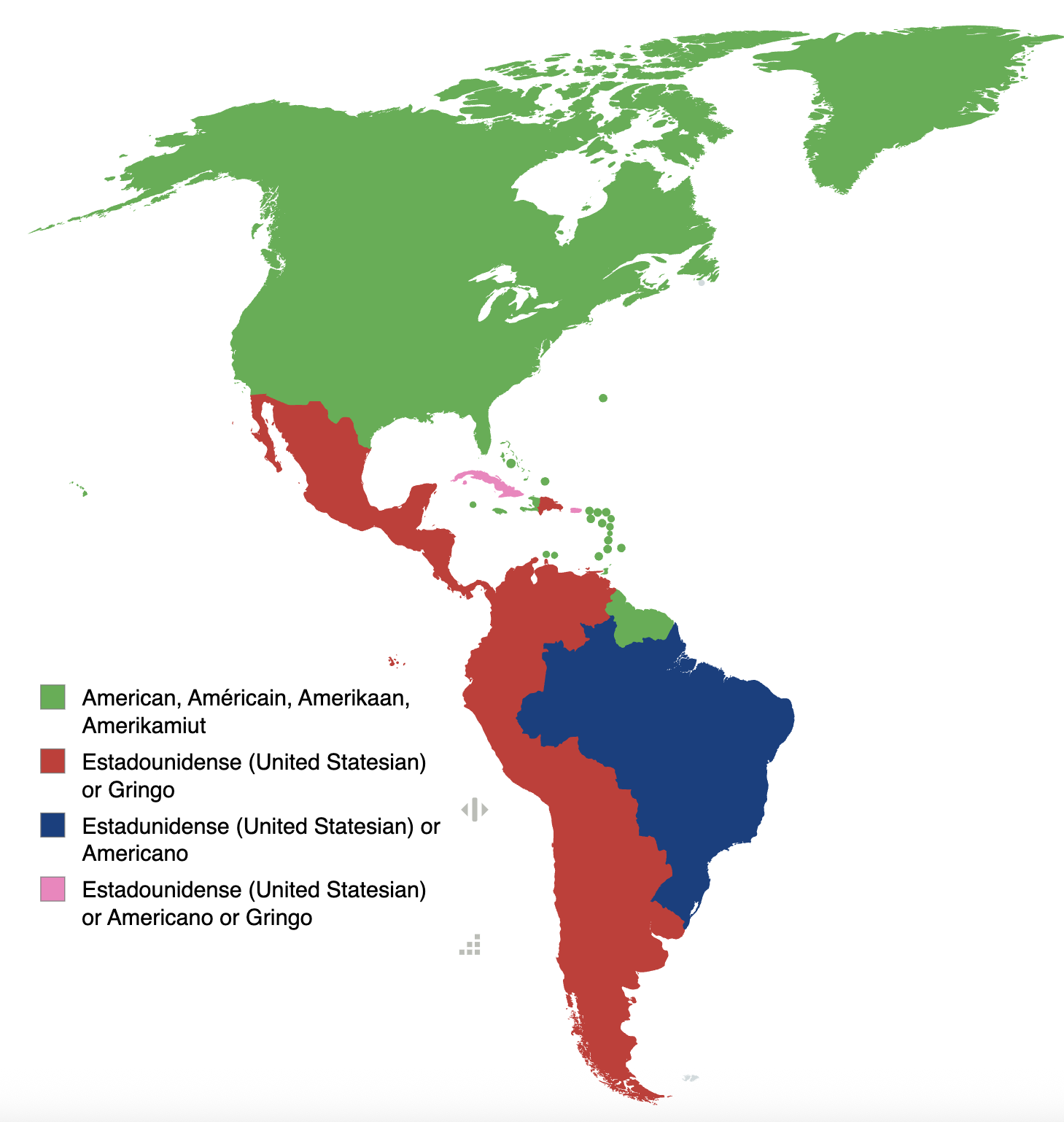Map of How Americas Refer to USA People by Language


Alex Cartwright
Senior Cartographer & GIS Specialist
Alex Cartwright is a renowned cartographer and geographic information systems specialist with over 15 years of experience in spatial analysis and data...
Geographic Analysis
What This Map Shows
The map titled "Various countries in the Americas refer to people from the USA based on their language" provides a fascinating glimpse into the linguistic diversity of the Americas. It illustrates how different countries in the region label or refer to people hailing from the United States, reflecting not only the languages spoken but also cultural nuances and regional relationships. The terms used range from the straightforward to the more colloquial, showcasing the rich tapestry of identity and language in the Americas.
Deep Dive into Linguistic Labels
Language is a powerful tool for expressing identity and culture. In the Americas, the way people from the USA are referred to often mirrors historical connections, cultural exchanges, and even political relationships. For instance, in Spanish-speaking countries, the term "americano" can refer broadly to anyone from the Americas, but it's interesting to note that many use it specifically to identify Americans from the USA. This can sometimes lead to confusion, as it may exclude Canadians and Mexicans from the same label.
In Brazil, where Portuguese is spoken, the term "norte-americano" is commonly used. This term is more precise, as it distinguishes individuals from the northern part of the continent, emphasizing their nationality. On the other hand, in Caribbean nations, such as Cuba or the Dominican Republic, the term "gringo" is frequently employed. While this term can sometimes carry derogatory connotations, it is often used in a more playful or neutral context among locals.
Interestingly, the names go beyond mere labels; they reflect attitudes and perceptions. For example, in some Central American countries, the use of "gringo" can indicate a sense of outsider status, highlighting the cultural divide between locals and Americans. This linguistic distinction can serve as a reminder of historical tensions and the complex relationship between the USA and its southern neighbors.
Moreover, the use of language as a descriptor can evolve over time. Have you noticed how terms can shift in meaning and usage depending on social and political contexts? For example, during periods of heightened nationalism or anti-American sentiment, terms may take on more negative connotations. In contrast, during times of cooperation and camaraderie, these labels can transform into terms of endearment.
Regional Analysis
When we look at the map regionally, we can identify distinct patterns in how language shapes identity. In North America, particularly in Canada and Mexico, the terms used to define Americans reflect a sense of neighborliness. Canadians may simply refer to Americans as "Americans", while Mexicans utilize terms like "gringo" or "norteamericano", which embody both familiarity and distance.
In contrast, the Caribbean islands have their unique lexicon. In Jamaica, for example, the term "Yankee" is often used, which carries its own cultural weight. The differences between terms used in these regions can provide insights into the historical interactions and exchanges between the USA and these nations.
In South America, the language shifts again. In Argentina, the term "yanqui" holds a specific meaning that can be both affectionate and critical, depending on the context. Meanwhile, in Chile, people might use the term "gringo" similarly to how it's used in the Caribbean, but with a more neutral tone. These variations tell us so much about regional identities and the layers of meaning that language carries.
Significance and Impact
Understanding the linguistic labels that different countries in the Americas use to refer to people from the USA is significant for several reasons. Firstly, it highlights the importance of language in shaping perceptions and relationships between countries. In an increasingly globalized world, recognizing these distinctions can foster better intercultural dialogue and understanding.
Moreover, the terms used can impact tourism, diplomacy, and international relations. For example, how Americans are perceived abroad can influence their experiences while traveling. Interestingly, the way these terms are used can also reflect larger trends in geopolitics and cultural exchanges.
Looking ahead, it's essential to consider how these linguistic labels might evolve as political and social landscapes change. With the rise of digital communication and cultural exchange, the way we refer to one another is constantly in flux. As the world becomes more interconnected, new terms may emerge, and existing ones may transform, reflecting our shared experiences and identities.
Ultimately, this map serves as a reminder of the intricate relationship between language, identity, and culture in the Americas. By understanding how different nations refer to Americans, we can better appreciate the diverse perspectives that shape our understanding of one another, paving the way for a more harmonious coexistence in an ever-connected world.
Visualization Details
- Published
- September 19, 2025
- Views
- 70
Comments
Loading comments...